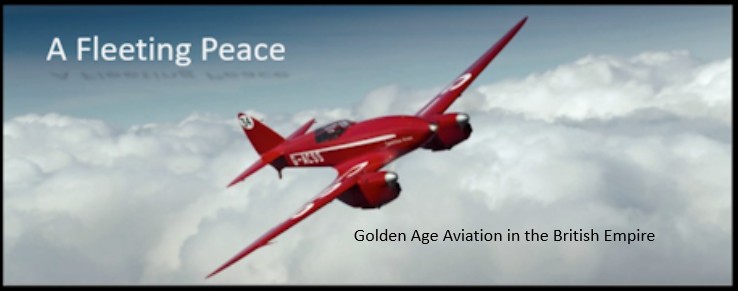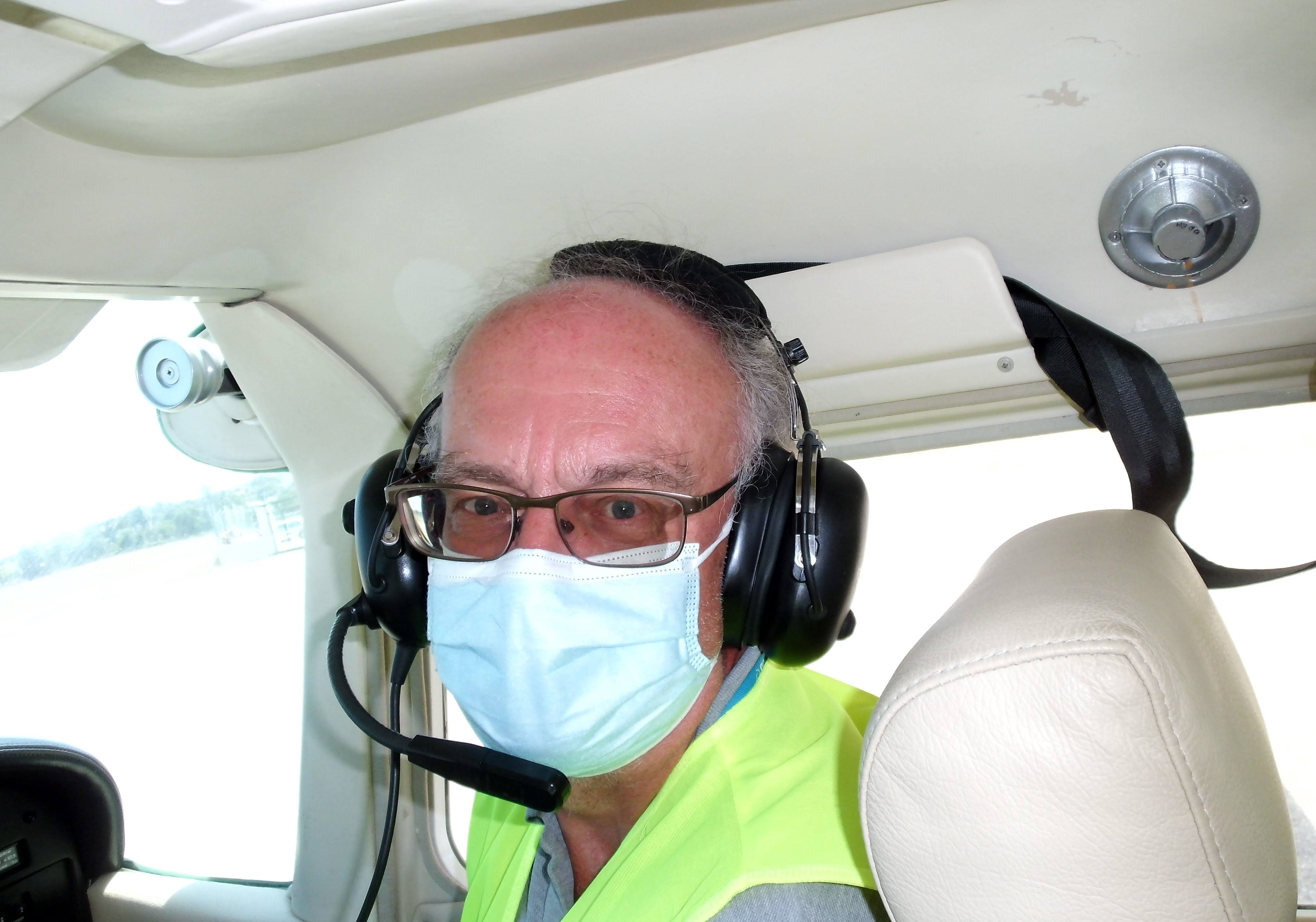|
Capt Hubert Stanford Broad MBE AFC
|
||
|
b. 18 (or 20) May 1897 shot through the neck in WWI by one of Richtofen's Red Circus pilots; [c.f. Angus Irwin]; second in Schneider 1925, to Jimmy Doolittle. In 1928, he spent possibly the most boring 24 hours of his life by beating 'all existing figures' for long endurance flights in light aeroplanes (unfortunately there was no official 'record' to beat as such, the FAI not recognising such things). His log makes, um, rivetting reading: --0--0--0--0--0--0--0--0--0--0-- 5:30pm: Hendon 7:40pm: Gloucester 8:30pm: Coffee and sandwiches 11pm: Over Central London, 3,000ft; watched theatre crowds leaving Midnight to dawn: Remained over Edgeware 2:30am: second meal 4:10am: First signs of dawn 5:10am: Biggin Hill. Saw night bomber in air ... Noon: Stamford. Very sleepy 4:30pm: Ipswich --0--0--0--0--0--0--0--0--0--0-- Having trimmed the controls, Hubert settled down and read 3 complete novels 'to relieve the boredom'. When he finally landed, he he said that he was very stiff with cramp, and promptly went home to sleep. His Moth still had 12 gallons of fuel, so it could have kept going for another 4 1/2 hours... He was named as co-respondent in Beryl Markham's divorce in 1939. de Havillands test pilot until 1935 (Bob Waight succeeded him) - broke the world's speed and height records for light aircraft in the original monoplane Tiger Moth, then joined RAE Farnborough; Hawker test pilot post-WWII; died 1975 FLIGHT MARCH 28TH, 1946 No. 2. CAPT. H. S. BROAD, Senior Production Test Pilot, Hawker Aircraft Co. FOR sheer wealth of flying experience it is doubtful whether there is another pilot in the world to equal Hubert Broad. He has flown everything from diminutive single-seaters to multi-engined--bombers, and including a number of out-and-out racing aircraft. His logbooks, of which he has filled some nine or ten, total over7,500 hours' flying time and 182 separate types. These are honest types—not modifications or different mark numbers of the same aircraft. Many of these he has also flown as seaplanes. Broad, at the age of nineteen, learnt to fly at the Hall School of Flying at Hendon in 1915. The aircraft on which he made his first flight (there was no dual, a pupil did straights across the airfield until he felt it was safe to do a circuit)was the single-seater Caudron with35 h.p. Y-type Anzani engine. Believe it or not, with this tiny horsepower the Caudron occasionally was made to stagger into the air with two people on board, but the passenger had to sit on the wing by the side of the nacelle. Early Days The end of 1915 found Broad in the R.N.A.S. at Eastchurch, and he was on the very first course at Cranwell, which was then a R.N.A.S. establishment rejoicing in the name of H.M.S. Daedalus. His first tour of duty at the front was with No. 3 Squadron at Dunkirk. He was among a number of pilots lent by the R.N.A.S. to the R.F.C. No. 3 Squadron flew Sopwith Pups, and it was while he was on one of these, escorting a bombing raid by 90 h.p. R.A.F.-engined B.E.s, that he was shot through the neck by one of Richtofen's later Goering's—Red Circus pilots. On recovery he spent a while as an instructor at Chingford and then went for his second tour of operations with No. 46 Squadron, who flew Sopwith Camels. The end of the 1914-18 war found Broad instructing at the Fighter Pilots' Flying School at Fairlop. Peace found him, as it found so many other young fellows ,with the ability to fly aircraft superbly and no other means of making a living. But a good living could be made by joy-riding in the early 1920's. First he joined the Avro Company, who were running joy-riding in a fairly big way, and in 1920 went to the Adiron Lakes in America with two Avro 504 seaplanes. These two aircraft saw their last days in Long Island, where they were completely wrecked by an autumn gale. By the next year he was back in England competing in the Aerial Derby air race round London on a Sopwith Camel. He finished 6th.In October, 1921, Broad joined de Havillands. Those who know this great concern now will smile to learn that when it started in those days it consisted entirely of two fabric hangars and a hut at Stag Lane. If memory serves, the capital of the company at that time was £100. The D.H. series numbers, which started in the Aircraft Manufacturing Co. Ltd., were carried on in this new firm, and Broad flew every one of the D.H. designs from the D.H.27 to the D.H.90. In the same period he did a lot of test flyingfor other aircraft constructors. He did the W.10, Handcross, Hendon, and some others for Handley Pages, the Parnall Pipit and the Saunders A. 10 fighter. On the Gloster Grebe he ran into wing flutter for the first time (this trouble, in those days, was on a par with the compressibility troubles we have now). Seaplane testing Another big job he did was most of the development work on the Gloster II and III racing seaplanes. Over a period I used to go with him to Felixstowe regularly. As a Press man I was forbidden the precincts of the R.A.F. seaplane station, but there was a perfectly good Great Eastern Railway pier alongside the station. I used to climb over the fence and watch the proceedings from the pier head. Broad nearly lost his life there one day in October,1924. As he was landing the Gloster II a forward strut to the floats collapsed, and the aircraft turned completely over. Mrs. Broad was watching from the shore, and it seemed a very long time before Hubert appeared on the surface. In 1925 Hubert Broad flew the Gloster III racing seaplane in the Schneider Trophy contest which was held that year over Chesapeake Bay in America. This was the race in which Henri Biard, flying the SupermarineS.4—the true forerunner of the Spitfire—crashed in the water with wing flutter. Broad finished this race second to Jimmy (now General) Doolittle. That must have been a vintage generation, because many names from that period have found their way into the high-spots of this last war. With the advent of the D.H. Moth in all its variants, Broad was to be seen performing aerobatics at most flying club meetings and entering many of the races. These included the King's Cup Race, which he won in 1926. He was flying a delightful Cirrus I Moth, which was a study in ivory and red. His average speed over the whole732 miles was 90.4 m.p.h. His piece de resistance in aerobatics was a perfectly formed big loop, the base of which was only some 150ft from the ground. It was a joy to behold, but very dangerous to perform. Broad had sufficient sense to realise this and sufficient courage to stop doing it. "Hooked" It was during an aerobatic show that Hubert had his closest shave in a life packed with incident. And it was so simple. Flying a D.H. Tiger Moth with no one in the front seat, he did a slow roll—a stunt at which he was a master. The safety belt in the empty cockpit was loosely done up. While the Moth was inverted the belt hung down and, as the aircraft turned the right way up again, the belt came back over the joy-stick. The result was that Broad had only about 1 1/2 inches of stick movement; but, nothing daunted, he made a sort of tail-up, seaplane landing. In this connection it is to be remembered that there were no lovely 2,000-yard runways on which to this sort of thing. In those days there was not a single runway available in Britain; not even for the take-off of over-loaded aircraft for long-distance records! Another unhappy moment occurred when he found the tail trim (the incidence of the whole tailplane was adjustable)of a D.H.34 had been connected in reverse. By a good deal of jockeying he managed to get into Northolt. On yet another occasion a careless mechanic left a screwdriver jammed in the chain and sprocket of the rudder actuating gear. This necessitated a down-wind, crosswind, finishing up into-wind landing at Hendon airfield, because that was a bit bigger than Stag Lane. One of the prettiest little aircraft he ever flew was the original D.H. Tiger Moth monoplane. This was tailored exactly to fit Broad. Physically he is not of big stature and few other pilots could get into the machine. In the front of the cockpit was a bulkhead which had two holes just large, enough for the feet to be threaded through, and these holes had to be padded with sorbo rubber so that Broad's shins did not get barked while landing and taxying. Springing was almost non-existent. Span was22ft 6in and length only 18ft 7m. In August, 1927, on this machine he broke the world's record for light aircraft for both speed and height. For the former the figure was 186.47 m.p.h., he having taken19 min 59 sec to cover the 10 km, and for altitude he reached 20,000ft in just 17 min. A year later he took two more world's records on the D.H. Hound. In 1935, after 20 wonderful years of service, he left de Havillands and later did some flying for the Air Registration Board. From here he went to the Royal Aircraft Establishment and finally joined Hawkers to be in charge of all their production testing at Langley. He will be 50 in a matter of a few weeks, yet every day sees him at oxygen height testing Tempest IIs. As he says, he has gone from 35 h.p. in the Anzani to over 3,000 h.p. in the Centaurus and Sabre VI, and from 2 ½ lb/sq ft in the Caudron to 40 lb/sq ft in the Tempest II. |

 photo: 1930, aged 33
photo: 1930, aged 33